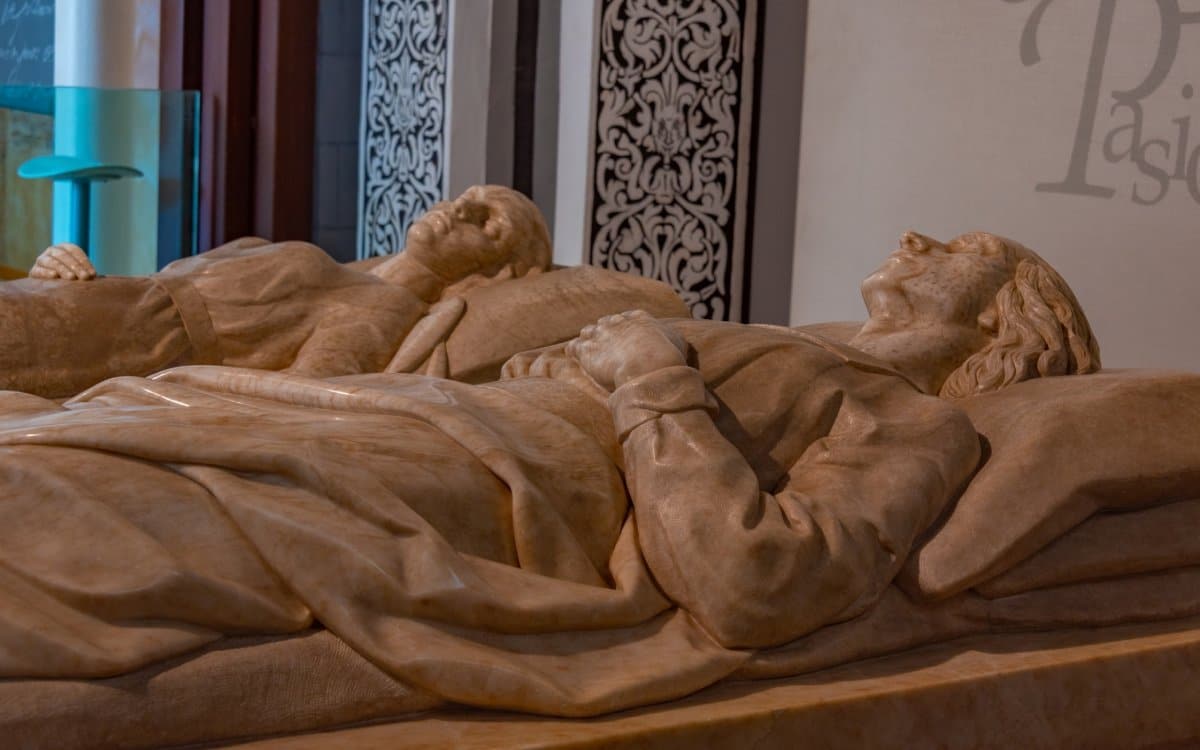

The lovers of Teruel. | Shutterstock
In the early 13th century, a young boy and a young girl from Teruel grew up together and built a true friendship. They were Isabel de Segura and Juan Martínez de Marcilla. Their friendship later turned into something different when the friends developed deeper feelings for each other. So the idea of getting married was brought up. But the girl’s father didn’t agree with them and refused to give her hand in marriage.
The boy wasn’t rich enough to marry her daughter, Pedro de Segura thought. She had to marry a man who could financially support her and her future children. And it occurred to Juan that he would travel in search of much-needed financial stability for five years so her father would give him his blessing. After his return, they would get married. Isabel promised to wait for him, and he left.

Statue of Isabel and Juan. | Shutterstock
Isabel had just turned 20 years old. According to her father, it was time for her to get married. Five years had passed since Juan left, looking for a better life. No one had heard any news about him. For this reason, the girl accepted to marry another man, the lord of the town of Albarracín, whose name was Pedro Fernández de Azagra. The wedding took place shortly after, on the last day of those five years of waiting. The party was fantastic. The bells tolled loudly, and the people celebrated the union with great emotion. A man riding a horse showed up during the celebrations. He wanted to know what people were celebrating and soon found out that Isabel had married Pedro Fernández de Azagra.
The newcomer was Juan. And when he heard those words, his heart skipped a beat, but he wouldn’t let go of Isabel so easily.
That night, Juan appeared by Isabel’s bed and asked for one last kiss. Since she was married now, she refused to do so. He asked one more time, and Isabel said no again. In that moment, Juan’s heart gave up and fell dead to the ground. When Isabel realised he had passed away, she woke up her new husband and told him everything. Fearing that Pedro would be accused of killing her wife’s former boyfriend, they both decided to take the body to her father.

Iglesia de San Pedro. | Shutterstock
A funeral was held so people could say their goodbyes. Isabel attended the funeral, determined to give him that last kiss he never got to receive before bidding farewell, possessed by nostalgia and guilt. And so she did. When she reached his body, she removed his shroud and kissed his cold lips. It was such a powerful kiss that it took her life away, and she fell dead on the man’s chest.

Lovers of Teruel’s hands. | Shutterstock
They were buried in the San Pedro Church, where they spend eternity together. At least that’s the common belief about the two mummies supposed to be them, which were found here in 1533. The chapel where their bodies were discovered was named Capilla de los Amantes (Lovers’ Chapel) in their honour. In 1955, the Spanish sculptor Juan de Ávalos y Taborda carved two new graves for the young couple. They rest together now, next to each other, but without really touching each other. Two approaching hands and ten fingers trying to intertwine will never get to do so. Forever longing.

Las Bodas de Isabel de Segura. | Shutterstock
Every year, on the weekend near the 14th of February, the festivities known as Las Bodas de Isabel de Segura (literally, Isabel de Segura’s wedding) are held in Teruel. This theatrical performance shows everything that happened in Teruel in the 13th century, Juan and Isabel’s story.
The play consists of 60 acts and the performance takes four days to be completed. Thousands of actors take part in it. In 2007, it was declared a Fiestas of Tourist Interest in Aragón. It became a Fiesta of National Tourism Interest a few years later, in 2016. This is a once-in-a lifetime experience, an exceptional way to dive into Teruel’s tradition through a story or legend, since it isn’t really known which parts are true and which are fictional. If you’re ever in Teruel near Valentine’s Day, you shouldn’t miss the opportunity to enjoy the story (or legend) that led to a popular Spanish saying: “Los amantes de Teruel: tonta ella, tonto él” (“The lovers of Teruel, silly him, silly her”).